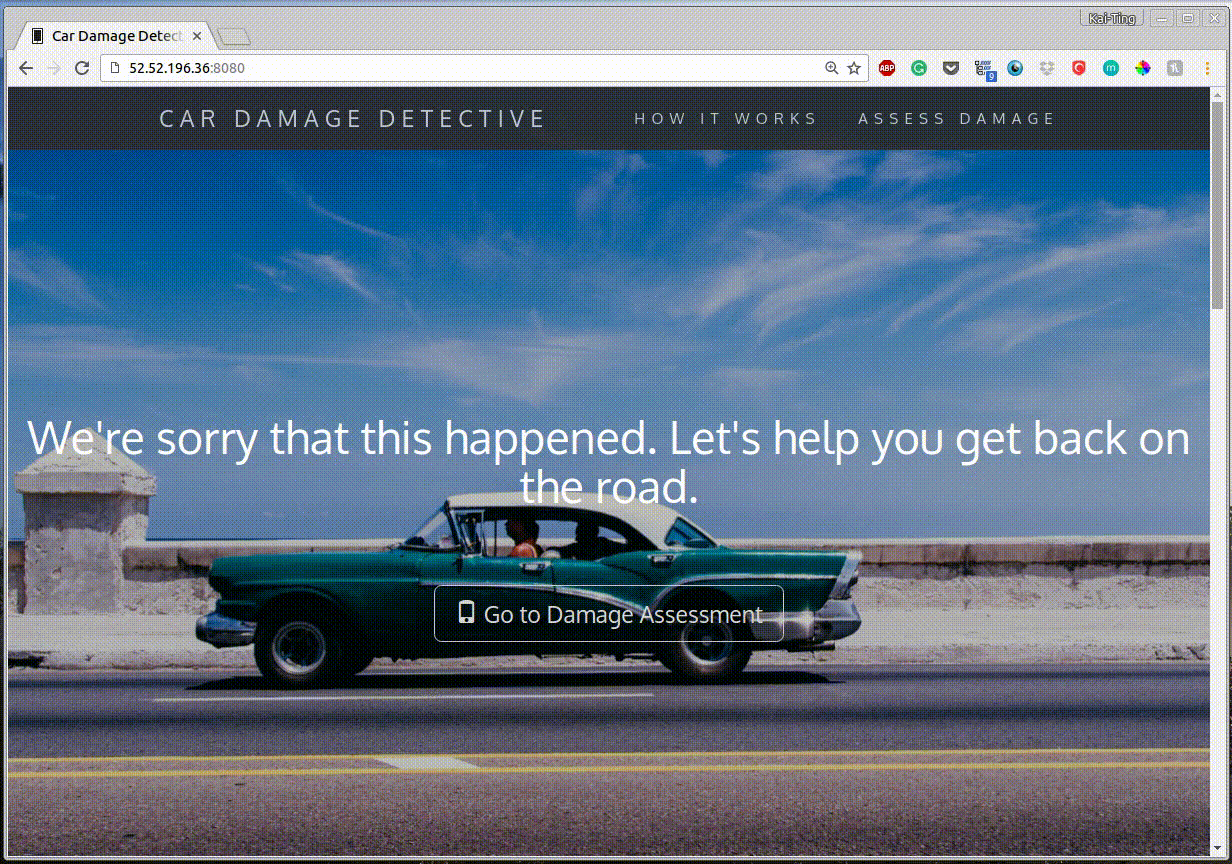Created a proof of concept to expedite the personal auto claims process with computer vision and deep learning. Identified damage location and severity to accuracies of 79% and 71% respectively, comparable to human performance. Trained a pipeline of convolutional neural networks using transfer learning on VGG16 with Keras and Theano to classify damage. Deployed consumer-facing web app with Flask and Bootstrap for real-time car damage evaluations. Data scraped from Google Images using Selenium, hand-labeled for classification and supplemented with the Stanford Car Image Dataset.
- Blog post - Coming soon!
- Web app - Car Damage Detective - Currently unavailable
- Presentation
Access to the image dataset is made available under the Open Data Commons Attribution License: https://opendatacommons.org/licenses/by/1.0/.
Credit for the Google Images scraper goes to Ian London's fantastic General Image Classifier project.

